Traditionalist Issues
 |
 |
 |
 |
 |
 |
 |
Dialogue Mass - LXXXIV
Expelling the Feast of St. Peter in Chains
Pope John XXIII deprived the faithful of another very ancient feast dedicated to St. Peter by removing St. Peter in Chains (1 August) from the General Roman Calendar. (1) This Feast celebrates the dedication in 461 of the Roman Basilica of the same name, built to house the relics of the Chains by which St. Peter was bound during his imprisonment in Jerusalem and in Rome. (2)
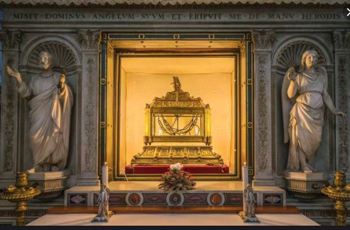 As an indication of the antiquity of this feast, the Gregorian Sacramentary – an 8th century compilation of liturgical texts used in previous centuries – contains a Mass for the 1st of August of St. Peter in Chains. It is of the greatest interest to note that its Propers (Collect, Secret and Postcommunion) are all identical to those of the Mass, which John XXIII suppressed in 1960. (3)
As an indication of the antiquity of this feast, the Gregorian Sacramentary – an 8th century compilation of liturgical texts used in previous centuries – contains a Mass for the 1st of August of St. Peter in Chains. It is of the greatest interest to note that its Propers (Collect, Secret and Postcommunion) are all identical to those of the Mass, which John XXIII suppressed in 1960. (3)
This feast is venerable in its antiquity for, as part of the official prayer of the Church, it has come down to us unchanged through all generations of Catholics from the 5th century. The “official” reason for its suppression – that it was an unnecessary duplication of the Feast of Sts. Peter and Paul – holds no water. It is inconsistent with the Church’s age-old practice of honoring its greatest Saints by according them multiple feasts – including, as we have seen, Vigils and Octaves – in the Calendar.
Chair, chains & keys
Not one of the feasts of St. Peter can be considered unnecessary; quite the reverse – they are all vital constituents of the immemorial tradition whereby the Church has given full liturgical honors to the Prince of the Apostles.
Just as his Chair in Rome was a symbol of his authority to teach, his Chains and Keys symbolize respectively his power of binding and loosing (retaining or remitting sins) given to him by Christ. In short, St. Peter’s Chains represent the bondage of sin, his Keys the means of liberation. That we all need to be loosed from those bonds is a reality that is not recognized by many today, hence the importance of this Feast Day in honor of St. Peter.
Let us now examine the Mass of St. Peter’s Chains so as to appreciate its value in terms of the Church’s adage lex orandi, lex credendi. Its prayers intertwine the themes of the fetters from which St. Peter was delivered by a miracle (Acts 12:7), and the bondage of sin from which we are freed through the supernatural power of his Keys (Mt 16:19).
The Latin form of the Alleluia verse – Loose, O Peter, the chains of the world at the bidding of God, thou that dost cause the heavenly realms to open to the blessed (4) – is a clear example of how liturgical language conveys essentially Catholic doctrine.
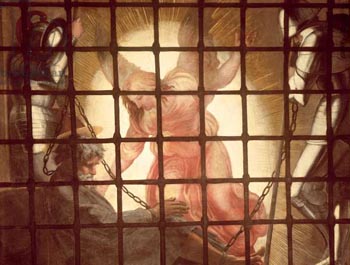 The Epistle (Acts 12:1-11) recounts the liberation of St. Peter from his Chains by the intervention of an Angel; the Gospel (Matt. 16:13-19) records that Christ conferred on him the power to absolve sins, and the Collect, as we can see from the Gregorian Sacramentary, (5) links the two events in one theologically harmonious whole: O God, Who didst cause blessed Peter, the Apostle, to depart, loosed from his chains and unhurt, loose, we beseech Thee, the chains of our sins, and graciously keep all evils far from us. Through Our Lord…
The Epistle (Acts 12:1-11) recounts the liberation of St. Peter from his Chains by the intervention of an Angel; the Gospel (Matt. 16:13-19) records that Christ conferred on him the power to absolve sins, and the Collect, as we can see from the Gregorian Sacramentary, (5) links the two events in one theologically harmonious whole: O God, Who didst cause blessed Peter, the Apostle, to depart, loosed from his chains and unhurt, loose, we beseech Thee, the chains of our sins, and graciously keep all evils far from us. Through Our Lord…
Taken together, all these prayers express the uniquely Catholic doctrine that, while sins are forgiven by God, He has chosen to mediate His forgiveness through priests of the New Covenant acting in the place of Christ. It hardly needs mentioning that this doctrine has always been, and still is, vigorously denied by Protestants.
Let us recall a pertinent remark by Msgr. Bugnini admitting that prayers in the Roman Rite that are unacceptable to Protestants should be eliminated so as “to facilitate in every way the path of union, removing every stone that can even remotely constitute a stumbling block or cause for discomfort for the separated brethren.” (6)
In these words, Bugnini’s scorn for the saving power of the Catholic liturgy to evangelize all nations is palpable. They contain no praise, only blame, for the loyalty that the Church has always shown in upholding all her traditions. Their implication is that certain Catholic prayers and practices do harm to those outside the Church by offending their sensibilities, and should be excised or altered.
There is a distinct element of irrationality here. As the formularies of St. Peter in Chains preceded the existence of Protestantism by a thousand years, they cannot be construed as specifically targeting Protestant communities. So, it is beyond perverse to force the Church to suppress this Feast Day instead of keeping it to promote a deeper understanding and appreciation of the Catholic Faith.
An act of self-destruction
The underlying theme of the Mass of St. Peter in Chains – Christ’s gift to St. Peter and his Successors of the power to forgive sins – was considered by the progressivist reformers as too difficult for Protestants to accept.
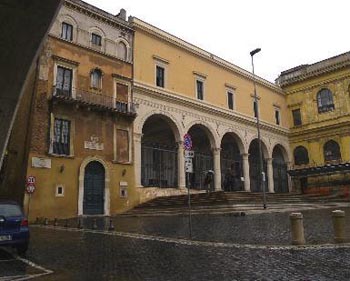 According to the reformers, it would be better that this Mass disappear from history than the “separated brethren” should feel unable to pursue “dialogue” unimpeded by too overt a display of “Popery.” And, ever since, Church leaders have internalized the age-old Protestant gibes against the Papacy as a usurpation of divine prerogatives.
According to the reformers, it would be better that this Mass disappear from history than the “separated brethren” should feel unable to pursue “dialogue” unimpeded by too overt a display of “Popery.” And, ever since, Church leaders have internalized the age-old Protestant gibes against the Papacy as a usurpation of divine prerogatives.
This volte-face began in earnest with Pope John XXIII’s opening speech of the Council, which, with supreme irony, contained a condemnation of any condemnation of doctrinal errors.
It was as if the Church had been struck by some spiritual auto-immune disease, and began attacking its own healthy organisms while welcoming in those that would paralyze its vital functions. Under the influence of the Ecumenical Movement, the Church simply stopped recognizing the difference between what is “self” – and should not be attacked – and “foreign” organisms, i.e., doctrinal errors, that should be attacked and eliminated.
Loss of Catholic identity
As the traditional liturgy is indissolubly linked to Catholic identity, destroying any part of the former is bound to have a negative effect on the latter. After all, this identity comes principally through the “collective memory” of generations of Catholics who have witnessed exactly the same rites continuously performed from remote antiquity to the middle of the 20th century.
These rites, inspired by the Holy Spirit, are the visible, audible, tangible expressions of the Faith and, therefore, vehicles of Divine Revelation. They not only tell us what to believe, but also tell us who and what we are.
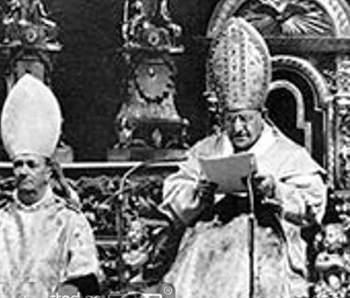 During the 16th century Pseudo-Reformation, the Protestant Archbishop of Canterbury, Thomas Cranmer, removed prayers from his communion and ordination rites that did not conform to Protestant belief. It is simply unconscionable that, in the 20th century, Popes would follow suit, with the gradual elimination of Catholic-specific prayers and ceremonies, from Pius XII’s Holy Week services, through John XXIII’s “ecumenical” changes, to Paul VI’s full-blown Novus Ordo.
During the 16th century Pseudo-Reformation, the Protestant Archbishop of Canterbury, Thomas Cranmer, removed prayers from his communion and ordination rites that did not conform to Protestant belief. It is simply unconscionable that, in the 20th century, Popes would follow suit, with the gradual elimination of Catholic-specific prayers and ceremonies, from Pius XII’s Holy Week services, through John XXIII’s “ecumenical” changes, to Paul VI’s full-blown Novus Ordo.
When John XXIII wielded the blade against the ancient Mass of St. Peter in Chains, far more was lost than a feast day in the General Calendar. He dealt a severe blow to the Priesthood: The disappearance of the Feast was more far-reaching than may first appear, as the General Calendar affects both the Missal and the Breviary, the two main staples of a priest’s liturgical life. The Breviary Lessons for August 1 ensured that all priests of the Roman Rite were familiar with the history of the Chains and the miracles associated with them. (7)
So, the real issue at stake was not the merits or demerits of “simplification,” but the right of the Catholic faithful to their full liturgical inheritance of which they were deprived for spurious “ecumenical” reasons. Every single such reform has opened the door to increasingly indefensible “ecumenical” practices, of which the following is pertinent to our topic.
Joining with Protestants to destroy Catholicism
On July 22, 2015, Card. Vincent Nichols, Archbishop of Westminster, attended a service of Choral Evensong in the Anglican Chapel Royal of St. Peter ad Vincula (St. Peter in Chains) in the Tower of London. There, he gave a sermon in which he quoted the Archbishop of Canterbury’s words on the importance of Religious Liberty as essential to a just and peaceful society. (8)
This is a clear illustration of how Vatican II induced the Catholic Hierarchy not only to appease those outside the Faith, but also to absorb and propagate their false doctrines which would destroy the Faith.
St Peter in Chains: a sign of contradiction to Religious Liberty
It is also an example of situational irony: an English Prelate in a joint service with Protestants in the Chapel of the Tower of London, where two Catholic Martyrs, Bishop John Fisher and Thomas More, still lie buried, having first been imprisoned in the Tower for their opposition to Henry VIII’s version of Religious Liberty.
Just as St. Peter opposed King Herod and the Emperor Nero, and was imprisoned and executed, so the two English Martyrs, who upheld the rights of the Church against the reigning Monarch, suffered a similar fate.
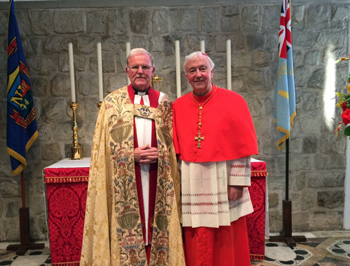 This Feast Day constitutes liturgical testimony that Vatican II’s teaching on Religious Liberty and Church-State relationships is false, and that modern Church leaders, under the Council’s influence, have failed to preserve what so many martyrs died to defend.
This Feast Day constitutes liturgical testimony that Vatican II’s teaching on Religious Liberty and Church-State relationships is false, and that modern Church leaders, under the Council’s influence, have failed to preserve what so many martyrs died to defend.
In the 19th century, Dom Guéranger’s commentary on the Feast can be seen as a prophetic reproof for Vatican II’s Religious Liberty: “Glorious Chains! Before the Herods and Neros and Caesars of all ages ye will be the guarantee of the liberty of souls. With what veneration have the Christian people honored you, ever since the earliest times!” (9)
And, addressing the first Pope, it was as if Dom Guéranger had foreseen the post-Vatican II crisis in the Church:
“The world, more than ever enslaved in the infatuation of its false liberties which make it forget the only true freedom, has more need now of enfranchisement than in the times of pagan Caesars: be once more its deliverer, now that thou art more powerful than ever. May Rome, especially, now fallen the lower because precipitated from a greater height, learn again the emancipating power that lies in thy Chains; they have become a rallying standard for her faithful children in these latter trials.” (10)
Continued


The Chains of St. Peter displayed on the high altar of the Rome Basilica
This feast is venerable in its antiquity for, as part of the official prayer of the Church, it has come down to us unchanged through all generations of Catholics from the 5th century. The “official” reason for its suppression – that it was an unnecessary duplication of the Feast of Sts. Peter and Paul – holds no water. It is inconsistent with the Church’s age-old practice of honoring its greatest Saints by according them multiple feasts – including, as we have seen, Vigils and Octaves – in the Calendar.
Chair, chains & keys
Not one of the feasts of St. Peter can be considered unnecessary; quite the reverse – they are all vital constituents of the immemorial tradition whereby the Church has given full liturgical honors to the Prince of the Apostles.
Just as his Chair in Rome was a symbol of his authority to teach, his Chains and Keys symbolize respectively his power of binding and loosing (retaining or remitting sins) given to him by Christ. In short, St. Peter’s Chains represent the bondage of sin, his Keys the means of liberation. That we all need to be loosed from those bonds is a reality that is not recognized by many today, hence the importance of this Feast Day in honor of St. Peter.
Let us now examine the Mass of St. Peter’s Chains so as to appreciate its value in terms of the Church’s adage lex orandi, lex credendi. Its prayers intertwine the themes of the fetters from which St. Peter was delivered by a miracle (Acts 12:7), and the bondage of sin from which we are freed through the supernatural power of his Keys (Mt 16:19).
The Latin form of the Alleluia verse – Loose, O Peter, the chains of the world at the bidding of God, thou that dost cause the heavenly realms to open to the blessed (4) – is a clear example of how liturgical language conveys essentially Catholic doctrine.

The Liberation of St. Peter by Raphael in the Vatican Museum
Taken together, all these prayers express the uniquely Catholic doctrine that, while sins are forgiven by God, He has chosen to mediate His forgiveness through priests of the New Covenant acting in the place of Christ. It hardly needs mentioning that this doctrine has always been, and still is, vigorously denied by Protestants.
Let us recall a pertinent remark by Msgr. Bugnini admitting that prayers in the Roman Rite that are unacceptable to Protestants should be eliminated so as “to facilitate in every way the path of union, removing every stone that can even remotely constitute a stumbling block or cause for discomfort for the separated brethren.” (6)
In these words, Bugnini’s scorn for the saving power of the Catholic liturgy to evangelize all nations is palpable. They contain no praise, only blame, for the loyalty that the Church has always shown in upholding all her traditions. Their implication is that certain Catholic prayers and practices do harm to those outside the Church by offending their sensibilities, and should be excised or altered.
There is a distinct element of irrationality here. As the formularies of St. Peter in Chains preceded the existence of Protestantism by a thousand years, they cannot be construed as specifically targeting Protestant communities. So, it is beyond perverse to force the Church to suppress this Feast Day instead of keeping it to promote a deeper understanding and appreciation of the Catholic Faith.
An act of self-destruction
The underlying theme of the Mass of St. Peter in Chains – Christ’s gift to St. Peter and his Successors of the power to forgive sins – was considered by the progressivist reformers as too difficult for Protestants to accept.

San Pietro in Vincoli is this Basilica with the arches
This volte-face began in earnest with Pope John XXIII’s opening speech of the Council, which, with supreme irony, contained a condemnation of any condemnation of doctrinal errors.
It was as if the Church had been struck by some spiritual auto-immune disease, and began attacking its own healthy organisms while welcoming in those that would paralyze its vital functions. Under the influence of the Ecumenical Movement, the Church simply stopped recognizing the difference between what is “self” – and should not be attacked – and “foreign” organisms, i.e., doctrinal errors, that should be attacked and eliminated.
Loss of Catholic identity
As the traditional liturgy is indissolubly linked to Catholic identity, destroying any part of the former is bound to have a negative effect on the latter. After all, this identity comes principally through the “collective memory” of generations of Catholics who have witnessed exactly the same rites continuously performed from remote antiquity to the middle of the 20th century.
These rites, inspired by the Holy Spirit, are the visible, audible, tangible expressions of the Faith and, therefore, vehicles of Divine Revelation. They not only tell us what to believe, but also tell us who and what we are.

John XXIII delivers blows to tradition in his Opening Address
When John XXIII wielded the blade against the ancient Mass of St. Peter in Chains, far more was lost than a feast day in the General Calendar. He dealt a severe blow to the Priesthood: The disappearance of the Feast was more far-reaching than may first appear, as the General Calendar affects both the Missal and the Breviary, the two main staples of a priest’s liturgical life. The Breviary Lessons for August 1 ensured that all priests of the Roman Rite were familiar with the history of the Chains and the miracles associated with them. (7)
So, the real issue at stake was not the merits or demerits of “simplification,” but the right of the Catholic faithful to their full liturgical inheritance of which they were deprived for spurious “ecumenical” reasons. Every single such reform has opened the door to increasingly indefensible “ecumenical” practices, of which the following is pertinent to our topic.
Joining with Protestants to destroy Catholicism
On July 22, 2015, Card. Vincent Nichols, Archbishop of Westminster, attended a service of Choral Evensong in the Anglican Chapel Royal of St. Peter ad Vincula (St. Peter in Chains) in the Tower of London. There, he gave a sermon in which he quoted the Archbishop of Canterbury’s words on the importance of Religious Liberty as essential to a just and peaceful society. (8)
This is a clear illustration of how Vatican II induced the Catholic Hierarchy not only to appease those outside the Faith, but also to absorb and propagate their false doctrines which would destroy the Faith.
St Peter in Chains: a sign of contradiction to Religious Liberty
It is also an example of situational irony: an English Prelate in a joint service with Protestants in the Chapel of the Tower of London, where two Catholic Martyrs, Bishop John Fisher and Thomas More, still lie buried, having first been imprisoned in the Tower for their opposition to Henry VIII’s version of Religious Liberty.
Just as St. Peter opposed King Herod and the Emperor Nero, and was imprisoned and executed, so the two English Martyrs, who upheld the rights of the Church against the reigning Monarch, suffered a similar fate.

Card. Nichols posing after an ecumenical service in the the Tower of London Chapel
In the 19th century, Dom Guéranger’s commentary on the Feast can be seen as a prophetic reproof for Vatican II’s Religious Liberty: “Glorious Chains! Before the Herods and Neros and Caesars of all ages ye will be the guarantee of the liberty of souls. With what veneration have the Christian people honored you, ever since the earliest times!” (9)
And, addressing the first Pope, it was as if Dom Guéranger had foreseen the post-Vatican II crisis in the Church:
“The world, more than ever enslaved in the infatuation of its false liberties which make it forget the only true freedom, has more need now of enfranchisement than in the times of pagan Caesars: be once more its deliverer, now that thou art more powerful than ever. May Rome, especially, now fallen the lower because precipitated from a greater height, learn again the emancipating power that lies in thy Chains; they have become a rallying standard for her faithful children in these latter trials.” (10)
Continued
- This Feast Day was relegated to the Appendix of the 1962 Missal under the heading of Missae pro aliquibus locis, i.e., one of the optional Masses to be celebrated in local places.
- The Chains are displayed in a gold and glass reliquary in the Basilica of San Pietro in Vincoli (St Peter in Chains) in Rome. In 2010, Pope Benedict XVI assigned the “Titulus” of this Basilica to the Archbishop of Washington.
- See here, p. 91.
- Solve, jubente Deo, terrarium, Petre, catenas: qui facis ut pateant caelestia regna beatis.
- See Note 1 for the text that reads: Deus qui beatum Petrum apostolum a vinculis absolutum inlæsum abire fecisti; nostrorum quaesumus absolve vincula peccatorum; et omnia mala a nobis propitiatus exclude. Per Dominum…
- A. Bugnini, "Variationes" ad Alcuni Testi della Settimana Santa (The "Variations" of Some Texts of Holy Week), L’Osservatore Romano, March 19, 1965, p. 6. In this article, Bugnini was referring to the changes to what was once known as the Prayer for the Unity of the Church in the Good Friday liturgy in which the terms “heretics” and “schismatics” were no longer to be used. This was in line with Pope John XXIII’s suppression of the epithet perfidi from the Good Friday prayer for the Jews.
- Before the relegation of this Feast, the Roman Breviary recounted the history of St. Peter’s Chains, as follows. When the Empress Eudocia, the wife of Theodosius II (ruler of the Eastern Roman Empire), went on pilgrimage to Jerusalem in 438, she received from Juvenalis, Bishop of Jerusalem, as gift the Chains by which St. Peter was held in prison under King Herod. She sent one portion of the Chains to her daughter Eudoxia, wife of Emperor Valentinian III, in Rome, who in turn presented it to the Pope [St. Leo the Great]. When Leo held it beside Peter’s Chains from the Mamertine Prison in Rome, the two miraculously fused together.
On account of this miracle, the Holy Chains began to be held in such great honor that a church on the Esquiline Hill was dedicated under the name of St. Peter ad vincula [in Chains], and the memory of its dedication was celebrated by a feast on the Kalends [i.e., first day] of August.
From that time, St. Peter’s Chains began to receive the honors of this day, instead of a pagan festival, which it had been customary to celebrate. Contact with them healed the sick, and put the demons to flight.
Pope St. Gregory the Great had a great devotion to the relic, and his Letters give testimony to how widespread this devotion was. He often sent small filings of the Chains as gifts to Bishops and to devout Monarchs, e.g., the Byzantine Empress Constantina Augusta, King Childebert of the Franks and King Reccared of the Visigoths (who converted to Catholicism). The filings were placed in a gold reliquary in the shape of a key representing the spiritual authority of St. Peter and his Successors. - See here.
- Dom Guéranger, The Liturgical Year, Vol. XIII, 1 August, Feast of St Peter in Chains, pp. 246-247.
- Ibid., p. 251.

Posted April 12, 2019
______________________
______________________
 Volume I |
 Volume II |
 Volume III |
 Volume IV |
 Volume V |
 Volume VI |
 Volume VII |
 Volume VIII |
 Volume IX |
 Volume X |
 Volume XI |
 Special Edition |


